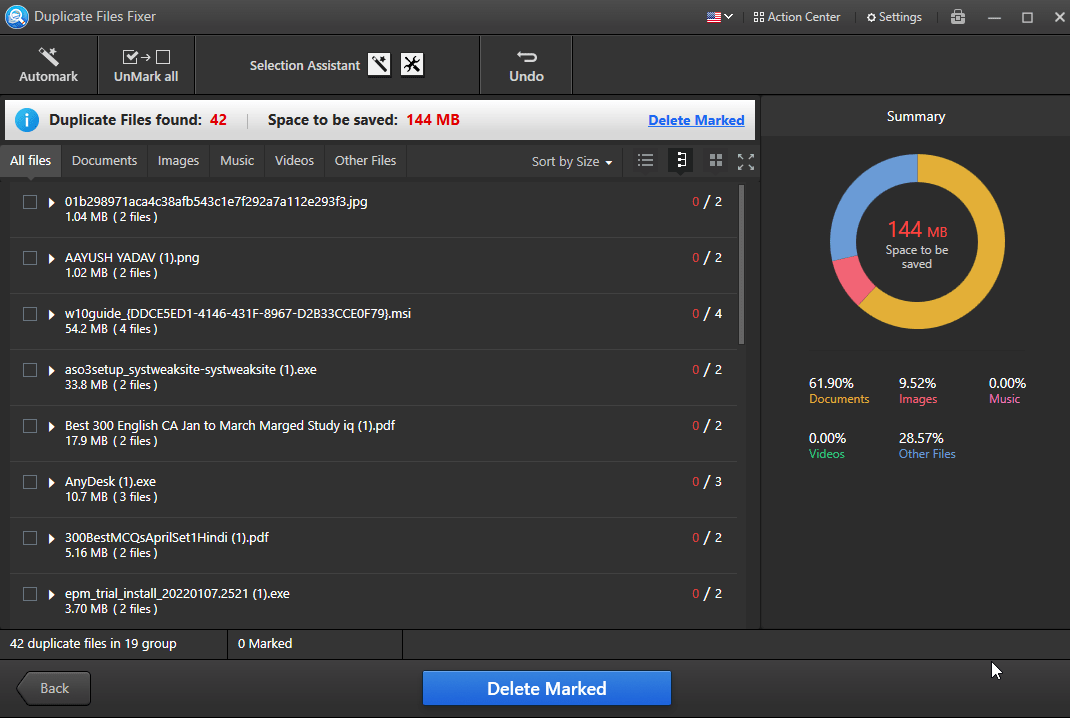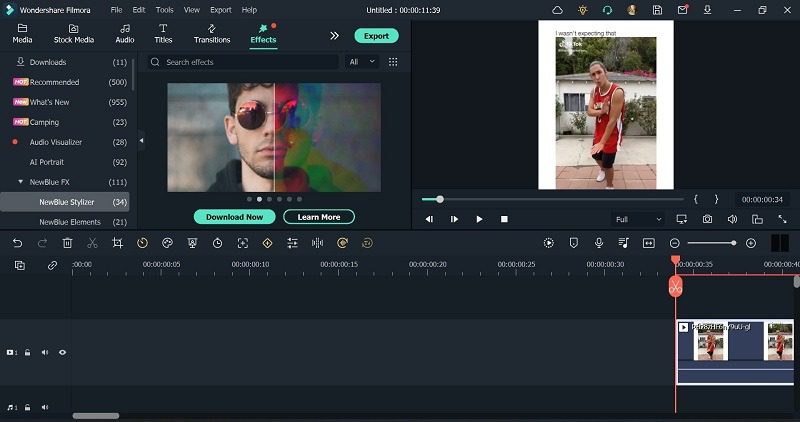Consumer shopping behaviour has changed drastically – all thanks to the explosion of eCommerce over the last few years!
In the past few years, online shopping has gone from being non-existent to a multi-billion dollar industry. The number of people buying goods and services online has increased more than ever before and now shopping online has become a common practice for almost everyone around the world.
Don’t believe us? Just take a look at these statistics by Statista:
- Global eCommerce sales are expected to top US$4.2 billion in 2020, up from US$3.5 billion in 2019. The figure is expected to continue increasing and take a larger piece of the retail pie.
- By 2023, it’s estimated that total retail sales will hit more than $6.5 trillion.
- More than 2.1 billion shoppers are expected to purchase goods and services online by 2021. Increasingly, these online shoppers live outside the U.S.
 Image Source: Oberlo
Image Source: Oberlo
The power that the Internet holds today has made it possible for sellers to reach their consumers anytime, anywhere, and from any device. But the type of devices you’re targeting them on will have a major impact on your success.
It’s no secret that mobile consumption has taken over our lives. Literally, take a look around and see how most of the people have this device glued on their hands 24/7. Or just take a look at these statistics below:
- According to GSMA Intelligence, there are 5.15 billion unique mobile phone users in the world today – that is more than 70% of the total world population.
- 67% of all eCommerce sales worldwide come from mobile devices. (Source: Statista)
- Shopping mobile apps are growing at a rate of 54% year-over-year. That’s the highest rate compared to any other app category. (Source: FlurryBlog)
- The worldwide sales through mobile devices are estimated at $2.3 trillion in 2019 and predicted to hit $3.5 trillion in 2021, which will compile 72.9% of total e-Commerce. (Source: Statista)

Image Source: Statista
So do you really need a mobile app for your eCommerce store? 100% YES!
But the question remains, how to make a shopping app that will attract a lot of customers? Who better to take notes from than the world’s biggest e-retailer, Amazon? Let’s look into the success of Amazon and determine how you can create a similar online shopping experience for your customers.
How Did Amazon Become So Big?
Online shopping isn’t something new. In fact, one of the first eCommerce transactions was made back in 1982!
However, with the launch of Amazon in 1994, the eCommerce marketing game changed phenomenally. The e-retail company started out back in 1994 as an online bookseller where it focused mainly on service and not the plethora of stuff that it sells today. In just 2 years in business, Amazon expanded itself to 45 states of the United States and saw its sales rise by US$20,000 per week. (Source: eCommerceTimes)
Jeff Bezos, the founder of Amazon, realized the potential of the company and expanded its services beyond just books; and for money, they went public in 1997 – and look at it now!
It is not just a successful eCommerce company that sells almost everything but has also diversified its business to cloud compounding, e-wallets, music, and whatnot.
Especially with their mobile eCommerce application, that launched more than decade-and-a-half ago, the company has taken the eCommerce market a step further. The sleek UI, unbeatable deals, and on-time delivery assurance, and exclusive launches are something that everybody looks upon.
In 2019, Amazon became the most popular shopping app in the United States with over 150.6 million users accessing the app. Other than that, the e-retail app boasts 700 million users worldwide which are 4.4x more mobile customers than all of its competitors combined.
There are roughly 25,000 sellers on Amazon with more than $1 million in sales, and 200,000 sellers with more than $100,000 in sales.
(Source: NetSolutions)
An eCommerce mobile app has made Amazon a reliable place to shop on and now you can create an app like that too! All you need to do is follow this simple 5-step guide on how to create an eCommerce app like Amazon.
How can you build an eCommerce app like Amazon?
#1 Conduct Market Research
Market research is the first and the most essential step for any software development process.
In fact, market research is what helped Amazon to become the online giant that it is today! Take a look at this paragraph from Brad Stone’s book, “The Everything Store: Jeff Bezos and the Age of Amazon.”
“They [Amazon] would let other more experienced retailers sell everything on the site via Amazon’s Marketplace, and Amazon would take a commission. Meanwhile, the company [Amazon] could watch and learn. That was something we did quite well, says Randy Miller. If you don’t know anything about the business, launch it through the Marketplace, bring retailers in, watch what they do and what they sell, understand it, and then get into it.”
Rather than selling household or electronic items themselves, Amazon created a Marketplace where they allowed other vendors to sell these products themselves. In doing so, Amazon was able to see which goods are selling well and how are they being sold. Once they figure out the popular products, they start selling the item themselves on the main website. (Source: GrowThink)
This strategy is what helped them to grow from an online bookstore to the retail giant of the internet.
With the right market research, you can easily identify your customer’s needs and requirements so you can make better decisions about designing, developing and marketing your app.
Here are the key research areas that you need to scrutinize:
- Industry: How big or small is your market? What are the current trends in the industry? How can your product impact the market? Define your market as clearly as possible and look if it is worth entering or not. For example, if the market is dwindling, it may not be the best market to enter.
- Customer: Once you have your niche specified, it’s time to understand the people you’re going to sell to – your customers. Which group of people in your product targeting? Define your ideal customer’s demographics like their gender, age-group, location, etc and understand their behaviour. For example, where your ideal customer may spend the most time on? Or, what is that one feature in your product that will attract them? The better you understand your customers, the better job you will do in creating an app for them.
- Competitors: Your competitors are the ones who are selling similar types of products as you are. See what is working or not working for them. How are they attracting customers? What is that one feature that they have in their app that can be very useful for yours too?
This is all that goes into market research. Once you’re done with it, you should move on to the next step!
#2 Create An MVP
You cannot build the most perfect eCommerce app in just one go and as the industry is very competitive you cannot wait too long. What you may need is a product model that defines your app’s main values and features first.
How can you get that? Through an MVP!
An MVP (Minimum Viable Product) for a marketplace is a fully operational version of your product with a minimum set of features that can be offered to initial users.
With an MVP you can:
- decide whether you have chosen the vital features correctly,
- figure out which features are popular among your audience while which are the ones you can discard,
- make sure if your target audience is interested in what you are offering,
- get the database of potential clients for the start,
- update and iterate your product using the initial audience’s feedback.
Before creating an MVP, you need to decide what are those core features of your app. What is the unique thing or experience that you want to give your customers so they will be happy to bring you success?
The faster you will create a shopping app, the more time you will have to improve based on user’s feedback, create worthwhile content, interact with customers, and market your app.
So what features should you consider for an MVP?
1) Customer log-in. Customers do not like apps that ask them to put in tons of personal information before browsing through. To make the log-in process easier, offer additional sign-up opinions like through email, Facebook, or Google. 
Image source: thinkwithgoogle.com
2) Search Feature. The search functionality is a crucial feature of whether it is an app or a website. Search is a fundamental activity for an app user to find what they want in the shortest amount of time. Make your search feature lightning-fast by adding lots of filters and high-quality indexing. You can also add search autocomplete, spelling correction and auto-suggestion to speed up the process.

Image source: thinkwithgoogle.com
3) Ratings & Reviews. According to eConsultancy, reviews produce an average of 18% uplift in sales.
Customers are more likely to buy from businesses that allow customer reviews than the ones that don’t. Encourage customers to rate the purchased items and leave reviews by commenting below the product information. Allow users to filter between most helpful or latest reviews.

Image source: thinkwithgoogle.com
4) Easy checkout. When it comes to shopping online, users tend to load carts with items they like but statistics have shown that most of them abandon it during the checkout process.
In fact, according to TechJury, the mobile shopping cart abandonment rate is 85.65%.
What can be the reason for this? It can be the amount of shipping cost or the app’s lack of payment option that may influence their decision. In order to boost your sales, you need to make the checkout process as simple as possible.
Don’t confuse users in making another account or filling up another form.
35% of transactions were dropped because the website required the user to create an account before checkout.
Source: TechJury
Keep a guest checkout option where users can just type in their email addresses to checkout instead of signing up on the app.

Image source: thinkwithgoogle.
5) A reliable payment gateway. Since the online payment is a sensitive process, you need a payment getaway that is completely reliable.
A payment gateway collects and verifies the user’s card information at the time of payment and sends the data to your bank to transfer the money. Only rely on systems that are trustworthy and have a good reputation in the industry.
Don’t forget to use multiple payment options like Google pay, Apple pay, etc. to boost sales. 
Image source: thinkwithgoogle.com
6) Product Recommendation. Want to add a personal touch that can increase user engagement? Try recommending goods to them based on their search and behaviour on the app.
This single feature has helped Amazon gain popularity and drive more revenue than most of its competitors. It can range from simple algorithms that recommend products based on user’s behaviour to incredibly complex AI and ML.
According to a study by Digital Commerce, putting product selections based on user’s interests can increase conversions by 411%.
#3 Look Out For Design
The success of an eCommerce app depends on how it is designed. Successful eCommerce apps like Amazon, are able to drive users because of their smart user-interface and beautiful visual performance.
If your app is designed the right way, your consumers will be able to browse through it easily no matter where they are.
Here are a few essential tips for you:
Brand identity is crucial. Your logo, colour palette, and custom font are the basic elements to show your brand identity on your app. Each of these elements must be represented in your user-interface and will also make a solid first-impression on your customers.
Use clear product images. According to research by 3M, visuals are processed 60,000x faster than text. So when you’re putting out your product images, consider the following things in mind:
- Use high-quality images from every angle.
- Put out large & concrete pictures to capture attention.
- Use white as the background.
- Allow users to zoom pictures.

Image source: thinkwithgoogle.com
You can also include short and snappy videos of your products, showcasing how people can use them. This will attract the type of attention that even the best of product pictures cannot.
In addition to this, don’t forget to add necessary product information like availability, choice of colour, size charts, etc.

#4 Select your platform
Based on the market research and audience analysis you did, you need to now decide which platform the majority of your users are present on. As you are starting out with a new app, having an Omni-platform approach may not be economically feasible. Hence choosing between one of the platforms is a crucial decision.
As compared to iOS, Android has more users and thus can have wider reach and audience for your eCommerce app. iOS, on the other hand, is more popular in North America and Europe and is more secure.
If cost is not a consideration for you, then you can get the best of both worlds by developing a cross-platform app. This will enable you to reach more users. If you cannot afford both, then develop the app for the platform that is used by the bulk of your target audience.
#5 Grow and promote your app
After you have successfully launched your MVP, it’s time to improve your product.
In order to do that, you need to collect user-feedback, do some additional research, and decide what new features can you add on to it. Here are some things you need to keep in mind after launching your app:
- Speed up. You might have heard of the famous saying “Every second counts” – and you should be taking this up into consideration when building your own eCommerce app.
A study by CXL Blog says that there is a 25% decrease in conversion rates with just one extra second of load time.
Back in 2012 Amazon calculated that each extra second of loading time would cost it 1.6 billion USD or 1% of annual revenue.
This speed is most important when loading the app’s home screen, product page, and checkout.
- Provide customer support. Some users may want to reach out to you for a complaint or a query -How are you going to deal with them?
Have a separate section on your app where your customers can go and share their queries. We’d recommend having a comprehensive FAQ and contact page.
Another way you can make your customer experience smoother is by having a chatbot available on your app that is going to be available 24/7 on your app and can handle requests and questions on your behalf.
According to Business Insider, customer support bots could save American businesses almost $23 billion a year.

Image source: thinkwithgoogle.com
- Promote your app. Let’s be real, nobody’s going to use your app if they are unaware of its existence. The time that you have spent making and developing your app, it’s time to spend at least twice that time on marketing it.
The first step in promoting your app is making it visible and optimized for the app store of your chosen platform. Don’t forget social media platforms like Facebook and Instagram in growing your app. Keep in mind that marketing is only successful when you’re creating value out of it and not shoving your app on your customers’ throat.
To Conclude
This 5-step guide is all you need when you want to create an online shopping app like Amazon. Once you have identified your niche and target audience, start building an MVP with minimal but important features that you can constant;y iterate on and make your final product worthwhile.
Constantly research on how you can improve your app and listen to your customer feedback. When you have everything intact, you’ll be able to create a shopping experience for your users that they’d want to come back for.
Author Bio – Aayush Narang is the founder of Spark Eighteen Lifestyle Pvt. Ltd a Digital Marketing Agency in Delhi. He is a Startup Evangelist. Entrepreneur. Business and Tech Enthusiast.








